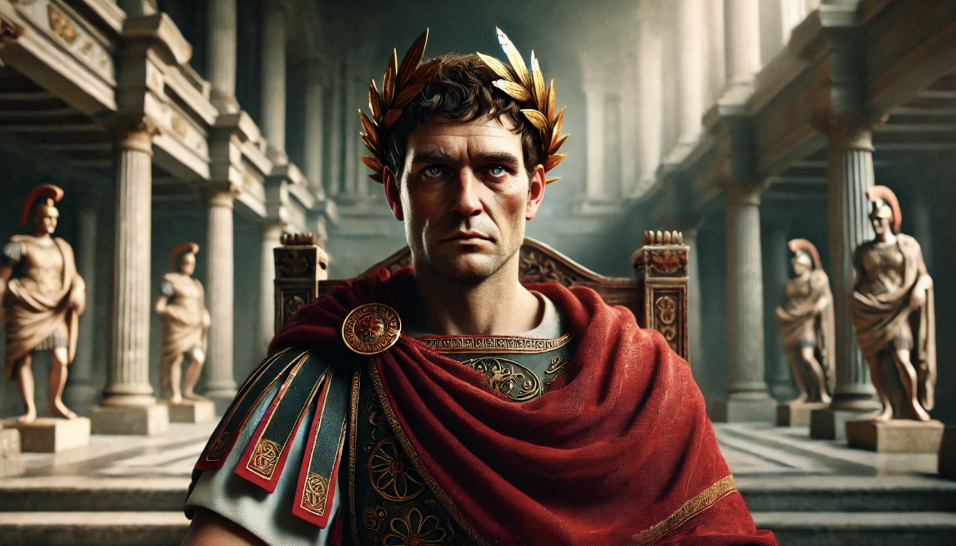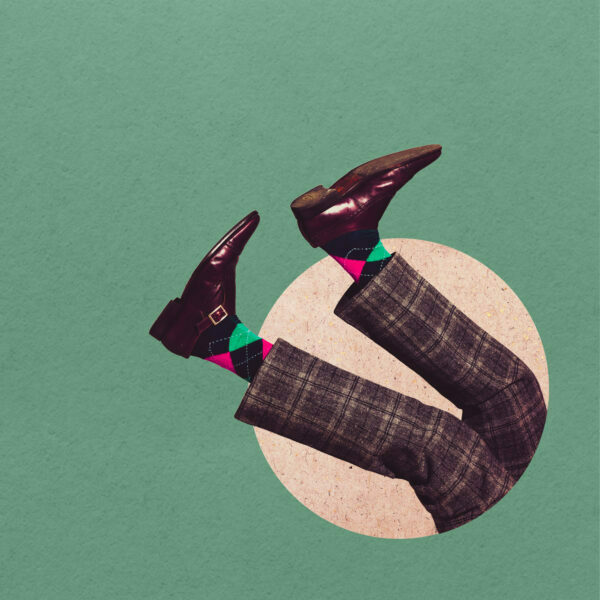Do you ever wonder why some people seem born to take charge—calm in crisis, clear in direction, and always two steps ahead of the rest of us?
That’s the ruler archetype in action. This isn’t just about being the loudest voice in the room or collecting titles on a LinkedIn profile. It’s about the instinct to lead, organize, and create lasting impact. The ruler is the strategist, the protector of order, and occasionally, the person who insists on rewriting the meeting agenda—again.
From legendary leaders in history to commanding figures in pop culture, the Ruler Archetype Examples are everywhere. And whether you’re crafting a character, building a brand, or just curious about what makes powerful personalities tick, understanding the ruler archetype can give you a front-row seat to how influence works.
Let’s take a closer look at what makes this archetype so compelling—and how it keeps showing up wherever structure and leadership are in high demand.
What Is the Ruler Archetype? – “The Master of Order and Control”
At its core, the ruler archetype represents authority, structure, and the desire to bring order to chaos. It’s the embodiment of leadership, whether it’s leading a kingdom, a company, or a cause. Rulers don’t just react to the world—they shape it according to a clear vision.
Rooted in Carl Jung’s theory of archetypes, the ruler is one of the classic personas that show up again and again in myths, stories, and even modern branding. Their motivation? Control. Not necessarily for dominance, but for stability. The world must be organized, predictable, and, preferably, run by competent people (like themselves).
They believe deeply in responsibility, rules, and the greater good—but with a clear hierarchy. Their biggest fear? Losing control or being overthrown. That’s why many ruler characters and real-life leaders are obsessed with legacy and succession.
This archetype isn’t limited to kings or presidents. You’ll find rulers in entrepreneurs, heads of departments, visionary founders, and even parents who color-code the snack drawer. Wherever structure is needed, a ruler steps in.
Traits of the Ruler – “The Qualities of Command”
What makes someone a ruler? It’s more than just a title—it’s a mindset. The ruler archetype is defined by a distinct set of traits that naturally draw people to leadership roles. These individuals don’t just want things to run smoothly—they need them to. And they’re often the ones people look to when it’s time to make a big decision.
Here are some hallmark traits of the ruler archetype:
- Confidence: Rulers radiate self-assurance and rarely second-guess themselves. They trust their judgment—and expect others to do the same.
- Strategic Thinking: They’re always planning, often with a long-term vision that others may not even see yet.
- Discipline: Rulers are focused, organized, and usually have a deep respect for systems and processes.
- Responsibility: They take their duties seriously and see leadership as a responsibility, not just a privilege.
- Decisiveness: When others hesitate, rulers act. They’re natural decision-makers, often stepping up in times of uncertainty.
Rulers don’t just lead—they create the environments in which leadership thrives. They’re often at their best when building systems, shaping culture, or guiding others toward a clear vision of success.
The Shadow Side – “When Power Becomes a Prison”
Every strength has a shadow, and for archetype the ruler, that shadow can cast a long—and sometimes intimidating—figure. When the drive for control becomes excessive, the ruler risks slipping into tyranny, micromanagement, or ego-driven decision-making.
While their intentions may start noble—building order, protecting systems, and leading others—the fear of losing power can lead rulers to tighten their grip, stifle creativity, or resist change. Ironically, in their pursuit of stability, archetype the ruler may become the very source of rigidity or dysfunction.
Here are a few common pitfalls on the ruler’s darker side:
- Authoritarianism: Rulers can become overly controlling, insisting on their way even when collaboration might serve better.
- Ego Inflation: A belief that no one else can lead as well can foster arrogance and distance from others.
- Fear of Delegation: Letting go of control—even a little—can feel threatening, leading to burnout or distrust.
- Resistance to Innovation: When structure becomes sacred, rulers may resist changes that threaten the status quo.
Recognizing this shadow side is essential. A balanced ruler doesn’t suppress it—they manage it. The best leaders remain open to feedback, flexible under pressure, and humble enough to evolve.
Your Publishing Journey Awaits – Start NowThe Ruler Archetype in Action – “From Thrones to Boardrooms”
The ruler archetype comes alive through characters, real-world figures, and brands that radiate authority, structure, and purpose. These examples highlight how this archetype manifests across different domains, from the corridors of power to pop culture classics and influential brands.
Historical & Mythological Rulers
Queen Elizabeth I
Known as the Virgin Queen, Elizabeth I ruled England during a time of intense political tension and global change. Her reign is remembered for stability, cultural flourishing, and firm leadership. She carefully cultivated her image, understood the optics of power, and consistently maintained control without ever marrying—a symbolic act of total autonomy. The ultimate ruler: intelligent, pragmatic, and fiercely independent.
Julius Caesar
More than just a military genius, Caesar was a master of political strategy and public persuasion. He centralized authority, reformed systems, and expanded the Roman Empire—but his relentless ambition and concentration of power sparked resistance, leading to his assassination. A classic ruler who walked the line between visionary leadership and authoritarianism.
Pop Culture Icons
Mufasa (The Lion King)
Mufasa is the archetype of the benevolent ruler—wise, composed, and just. He represents order and tradition in the Pride Lands and educates young Simba about the responsibility that comes with power. His death creates a leadership vacuum, showing how essential a strong, fair leader is to maintaining harmony.
Miranda Priestly (The Devil Wears Prada)
Miranda isn’t running a kingdom—but she may as well be. As the editor-in-chief of a high-fashion magazine, she exerts total control over her environment. Her high standards, commanding presence, and unspoken authority make her a modern, corporate ruler archetype. She doesn’t raise her voice—she doesn’t have to.
Tywin Lannister (Game of Thrones)
Tywin is strategic, cold, and driven by legacy. He’s a tactician who places family and power above emotion. While his leadership brings stability, his inability to connect on a human level ultimately leads to internal betrayal. He’s a ruler consumed by control and legacy preservation—showing the danger of disconnecting from empathy.
Brand Leaders
Rolex
Rolex exudes precision, excellence, and control. It positions itself not just as a watchmaker but as a symbol of achievement and legacy. The brand’s timeless appeal and strict brand discipline are aligned with ruler archetype values—especially its emphasis on tradition and enduring prestige.
Microsoft (under Satya Nadella)
While early Microsoft was already powerful, Nadella’s leadership brought refined vision and strategic clarity. His focus on empathy and innovation within a strong system made the company more agile without losing its ruler energy. Microsoft’s emphasis on structure, influence, and ecosystem-building makes it a textbook example of the modern ruler brand.
Mercedes-Benz
Mercedes doesn’t just sell cars—it sells controlled power, mastery of engineering, and timeless class. The brand consistently reinforces a message of excellence, sophistication, and authority, targeting those who see themselves as leaders in life.
The Ruler Archetype Examples remind us that rulers aren’t always kings or queens. They can be storytellers, founders, parents, and public figures. What unites them is their commitment to leadership, their need for order, and their powerful presence—whether in a throne room or a boardroom.
Writing the Ruler Archetype – “Crafting Characters of Command”
Whether you’re writing fiction, developing brand personas, or building a compelling narrative arc, archetype the ruler adds depth, tension, and gravitas to any story. But crafting a believable ruler means going beyond the crown and cape. You need to dig into what drives them—and what threatens them.
Here’s how to create a ruler archetype that feels authentic and dynamic:
Start with Their Motivation
The ruler craves control—but why? Maybe it’s fear of chaos, a desire to protect others, or a belief that no one else can do the job right. Explore their underlying reason for seeking power. This makes them more than just a control freak—it makes them human.
Show Their Strengths—Strategically
Highlight traits like decisiveness, vision, and the ability to stay calm under pressure. Let them solve problems others can’t, and earn the trust of their followers (or subordinates) with competence, not just charisma.
Use the Shadow to Add Tension
No ruler is flawless. Maybe they struggle to delegate, fear betrayal, or push too hard for perfection. A great ruler character often wrestles with pride, isolation, or a legacy they feel burdened to uphold. Use this tension to drive internal conflict and story arcs.
Give Them a Worthy Opposition
A strong ruler demands a strong challenge. That could be a rebellious character, a crumbling system, or an inner conflict about whether control is still worth the cost. Their response to disruption reveals their true character.
Allow for Evolution (or Downfall)
Some ruler characters soften over time, learning to trust others or share power. Others double down on control, unraveling into tyrants. Think of Tywin Lannister versus Mufasa. Both ruled—but their legacies diverged.
Whether you’re writing a CEO, a monarch, or a self-made mogul, the ruler archetype brings elegance, edge, and existential weight to your narrative. Just don’t forget: the crown is heavy for a reason.
Is the Ruler Archetype in You? – “Channeling Your Inner Leader”
You don’t need to wear a crown or sign executive orders to embody the ruler archetype. In fact, ruler traits often show up in everyday people—those who naturally step up, take initiative, and bring structure wherever they go.
Wondering if you lean ruler? Ask yourself:
- Do you feel a strong sense of responsibility for others?
- Are you the one who always creates the plan (and sticks to it)?
- Does disorganization stress you out more than most?
- Do people turn to you for decisions, especially in high-pressure situations?
- Do you value systems, legacy, or influence?
If you found yourself nodding, the ruler archetype may play a key role in how you show up in the world. This can be a powerful tool in leadership roles, entrepreneurship, parenting, and personal development. Ruler energy, when balanced with empathy and flexibility, can bring lasting impact and stability to any environment.
But don’t forget the shadow side: be mindful of rigidity, perfectionism, or the urge to over-control. The most effective rulers lead not just with structure—but with purpose and trust.
Whether you’re leading a team, a community, or just your own path, your inner ruler might be the compass you’ve been following all along.
Conclusion – “Embrace the Power, Lead with Purpose”
The ruler archetype is more than a figure of authority—it’s a symbol of vision, structure, and the pursuit of lasting influence. Whether embodied by legendary leaders, powerful fictional characters, or brands that dominate their industries, rulers show us the importance of responsibility and the impact of intentional leadership.
But with great power comes great pressure. The true strength of the ruler isn’t just in control—it’s in knowing when to loosen the grip, listen to others, and adapt. The best rulers lead with purpose, not ego.
As you move forward—writing stories, building brands, or navigating your own leadership style—remember that the ruler archetype isn’t about being perfect. It’s about showing up with clarity, owning your influence, and leaving behind something that matters.
Because real power isn’t just about ruling—it’s about leading well.
FAQs – The Ruler Archetype
Q1: What is the Ruler personality type?
The ruler archetype aligns closely with personality types that value order, leadership, and control—such as ENTJ or ESTJ in the Myers-Briggs system, or Type 1 (The Reformer) and Type 8 (The Challenger) in the Enneagram. Rulers are strategic thinkers, decision-makers, and natural leaders who are motivated by the desire to bring structure and security to their environment.
Q2: What is the weakness of the Ruler archetype?
While rulers bring vision and order, their shadow side includes a tendency toward authoritarianism, rigidity, or micromanagement. Their deep fear of chaos can lead them to over-control situations or resist change. The most effective rulers recognize this shadow and intentionally cultivate trust, delegation, and adaptability.
Q3: What are the strengths and weaknesses of the Ruler archetype?
Strengths: Visionary leadership, strong organizational skills, responsibility, decisiveness, and ability to command respect.
Weaknesses: Perfectionism, fear of losing control, difficulty trusting others, and sometimes a lack of emotional flexibility.
Q4: What is an example of the Ruler archetype?
A classic example from The Ruler Archetype Examples is Queen Elizabeth I, who led England with strategic brilliance and a deep sense of sovereignty. In fiction, Mufasa from The Lion King represents the ideal benevolent ruler—wise, just, and protective. In branding, Rolex exemplifies the ruler through timeless elegance, precision, and prestige.
Q5: What are the characteristics of the Ruler brand archetype?
Ruler brands convey power, excellence, and control. They typically target consumers who value status, stability, and trust. Common traits include formality, high standards, tradition, and long-term vision. Think of Mercedes-Benz, Microsoft, or American Express—brands that project authority and command loyalty.
Q6: What is the Ruler archetype motto?
The core motto of the ruler archetype is often quoted as: “Power isn’t everything. It’s the only thing.” More broadly, their philosophy is about creating order from chaos and leading with purpose. Another version: “I lead, therefore I am.”
Q7: What motivates the Ruler archetype?
The primary motivation is control and stability. Rulers want to ensure things are functioning efficiently, systems are upheld, and goals are met. Whether they’re leading a kingdom, a business, or a team, their drive comes from the desire to manage risk, establish order, and leave a lasting legacy.
Q8: How do you identify a brand archetype?
To identify a brand’s archetype, look at its messaging, visual identity, tone of voice, and customer promise. Brands aligned with the ruler archetype, for example, often highlight leadership, trust, excellence, authority, and heritage. Archetype-based branding ensures consistency and emotional resonance across all touchpoints.








